KRA 2013 Quiz-Solutions
♛
KRA Quiz 2013 – Solutions
Question 1
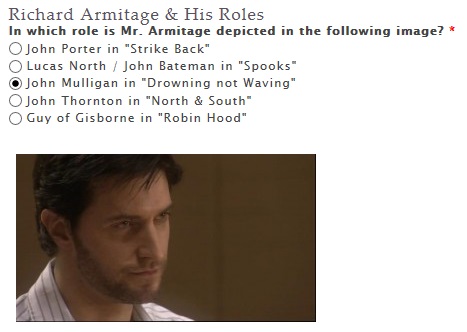
Mr. Armitage as an actor in all his roles has a distinct air indicating and determining each and every character.
At the beginning, I even had difficulties discerning it was really him in each of his roles, because he just looked so entirely different for another character from what he had done before.
To solve this puzzle, all roles requiring historical costume were out of the question.
And the dangerously criminal gleam in his eyes just gave him away, …
John Mulligan, sitting devastated in the prison, looking back on his life’s decisions, is a so far singular expression Mr. Armitage did on screen.
For further reference, please visit the picture gallery of RichardArmitageNet.com.
Question 2
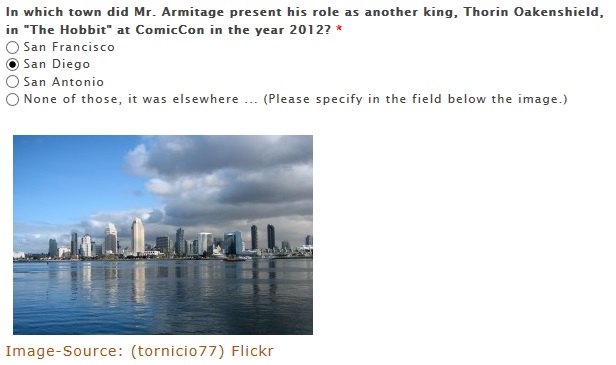
This was meant to be an online research itemn for all those who do not remember those pictures of the event on RichardArmitageNet.com.
The ComicCon website is here.
Question 3

6th March, 2013 – Richard Armitage on Twitter (@TheHobbitMovie):
RT @cat_v_: @thehobbitmovie if you could have dinner with any 3, fictional or non-fictional, who would they be? #AskThorin
— The Hobbit (@TheHobbitMovie) March 6, 2013
Richard: Richard III, John F. Kennedy, and Ian McKellen.
— The Hobbit (@TheHobbitMovie) March 6, 2013
Richard Armitage in “The Independent” (2nd December 2004), quoted after RichardArmitageOnline.com:
Lucretia Borgia. She was dark and powerful, and had no boundaries. I’d like to find out what makes such people tick.
Question 4

Richard III and Anne Neville married in Westminster Abbey, which today belongs to London, on the 12 July 1472. (See Wikipedia article about Anne Neville)
Question 5

The three older brothers of King Richard III were:
- Edward IV, King of England
- Edmund, Earl of Rutland, who died together with their father after the Battle of Wakefield
- George, Duke of Clarence
(See: Wikipedia Plantagenet Family-tree)
Question 6
- William Shakespeare – famous drama “Richard III”
- Thomas More – “History of King Richard III” (see: Wikipedia)
- Polydore Vergil – “Anglica Historia” (See: Wikipedia)
- George Buck – “History of the Life and Reign of Richard III” (See: Wikipedia)
- Horace Walpole – “Historic Doubts on the Life and Reign of King Richard the Third“
- Dr David Hipshon – “Richard III and the Death of Chivalry“
- Dr John Ashdown-Hill – “The Last Days of Richard III and the Fate of His DNA“
Question 7

Sorry, but I only had one correct result on that.
Only in the 20th century a car park was put over the grave of King Richard III, so, the correct result here is ‘less than 100 years’.
Question 8
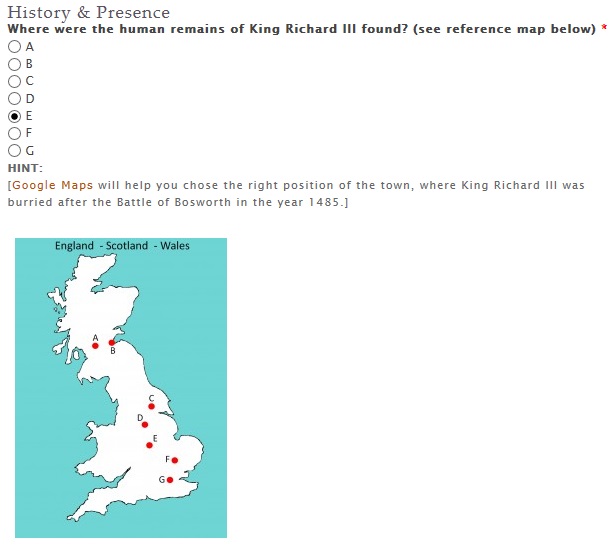
Sorry, that gave a bit of an advantage to all U.K. citizens, though with the Google Maps link you all did really well with that answer!
The dots in the map are:
- A = Glasgow
- B = Edinburgh
- C = York
- D = Sheffield
- E = Leicester
- F = Cambridge
- G = London
Question 9
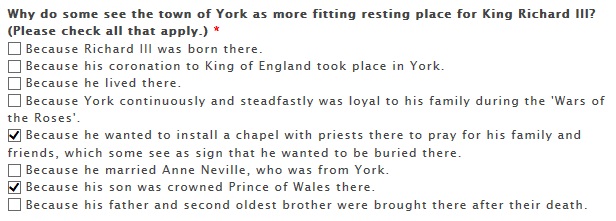
Only two points are indeed correct here, all others unfortunately not.
- King Richard III was born at Fotheringhay Castle, which is closer to Leicester than to York. So no point here!
- King Richard III’s coronation took place in London / Westminster.
- King Richard III lived in Middleham, which by late medieval travel standards, should be approximately 1 to 1 1/2 day’s journey away from York, depending on the streets and readiness of horses. The distance is now, according to Google rout planner, 1 1/2 hours by car, while King Richard III almost certainly could not use the convenient motorway.
- The one answer which really led you astray is unfortunately not true. During the Wars of the Roses, York most of the time was on the Lancastrian side, e.g. at the time after the Battle of Wakefield, when the Lancastrian troups brought the severed heads of King Richard III’s father and second oldest brother to the town to exhibit them as sign of their victory.
- We had that point before. Richard III married Anne Neville in London / Westminster Abbey.
- The last option, as positive as it sounds, was nothing of that kind. The option evades to mention that not the whole bodies made it to York, but only the severed heads, put on a spike and exhibited in front of the town gate, and also the fact, that York was supporting the Lancastrian side at that time and was chosen as secure location for the Lancastrians to celebrate the victory.
This might have been one of the reasons, why King Richard III wanted a chapel to pray for his family and friends there, to commemorate and to forgive.
Question 10

Elizabeth Woodville’s husband Edward IV as Plantagenet had the white rose of York as symbol.
Question 11

No contemporary source gives us a hint that this honorary ‘title’ did exist at the time. It is a fabrication by Philippa Gregory for her book about Elizabeth Woodville.
Question 12

The Greyfriars (Wikipedia article) were the ‘poor’ among the monastic obediences. Grey was the colour of their habit, as it was the easiest and cheapest colour to dye cloth. They swore personal poverty and in my region they got the by-name “bare feet”, because even in strong winters they went without socks, but bare feet in their wooden shoes.
It is a bit of a symbolic background that the poor among monasteries took to burying King Richard III, while the rich monasteries did not.
Question 13

Even documents and primary source material of the researched time cannot be taken at face value.
Documents were issued to reach something and are not trustworthy on their own, without looking into their background.
The motives and intentions of their issuers, the political pressure guiding or eventually forcing them.
So even ‘Titulus Regius’ cannot be seen as trustworthy without having a closer look at the people involved and the processes enabling it.

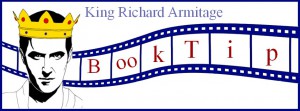
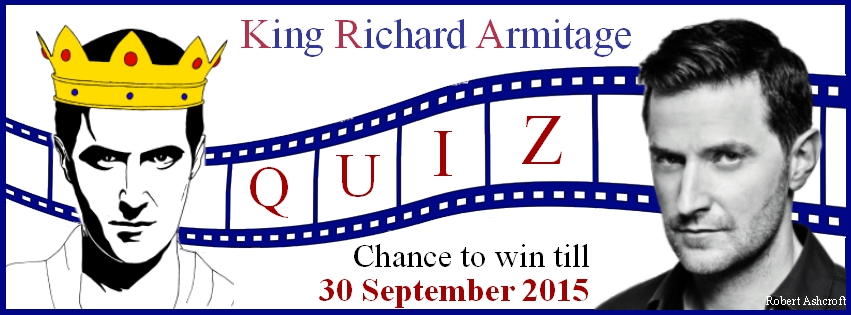
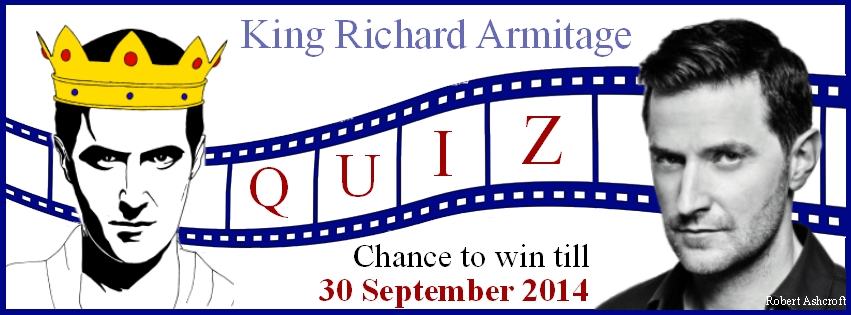
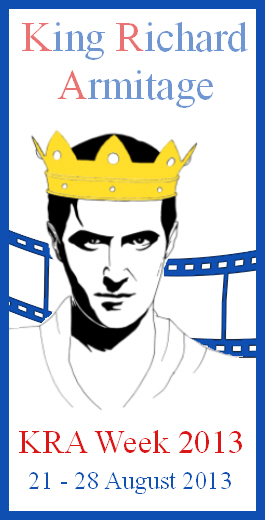
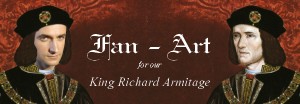
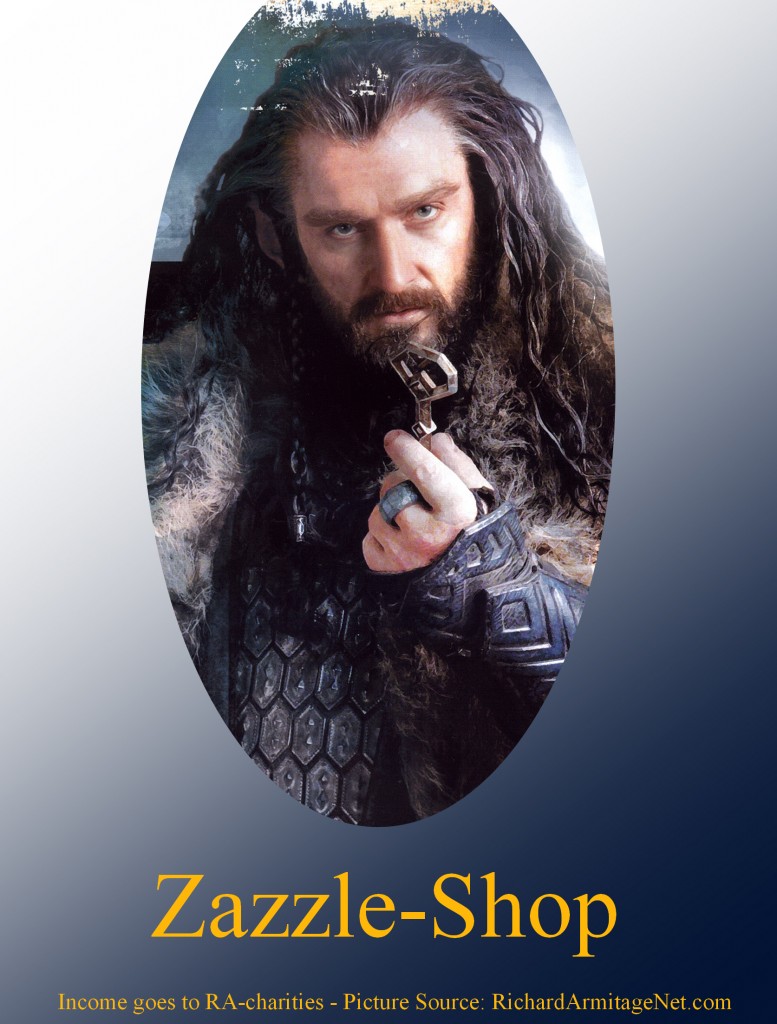
Pingback: KRA-Week 2013: Thank You | King Richard Armitage